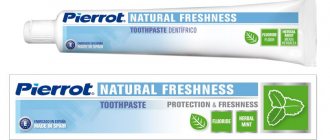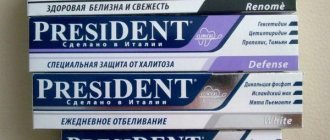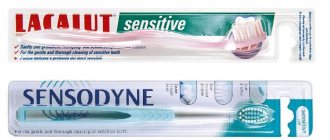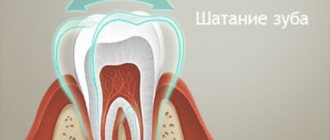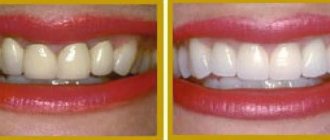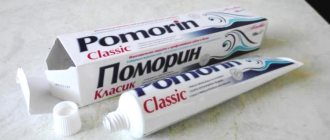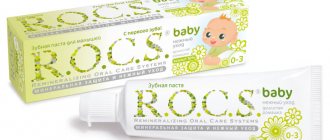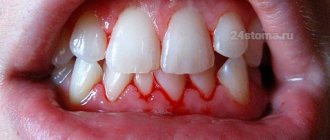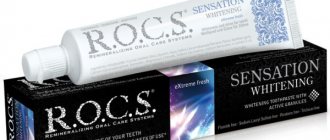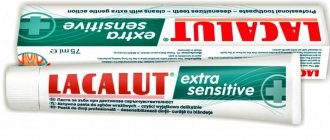In the beginning there was sand and chalk
Toothpaste and brush are everyday things with which our day begins and ends. However, they were once a real luxury. The ancient Egyptians were the first to think about oral hygiene and began to use sand, ash, ground stones and animal horns as a cleaning agent, and their own finger replaced the brush. In the 4th century BC. The great healer Hippocrates recommended using mixtures of pumice with the addition of wine vinegar, which are more gentle on tooth enamel, to prevent dental diseases. At the end of the 18th century, little had changed. For example, the British brushed their teeth with powders that included crushed brick, crushed bark and coal chips.
The prototype of modern toothpaste was invented by Americans in the 19th century. This time there were no stones or ash. Teeth cleaning products were a mixture of chalk powder, neutral soap and aromatic additives. It was only in 1873 that Colgate released the first toothpaste in glass jars, which replaced tubes two decades later. They were invented by dentist Washington Sheffield of New London. But Colgate beat the inventor by quickly registering a patent for itself. An interesting fact is that in Russia, most people at that time continued to brush their teeth with chalk-based powder, and only in the 50s it became possible to buy a familiar tube of toothpaste in stores.
Mineral salts
Mineral salts and their complexes added to toothpastes have a beneficial effect on the oral mucosa, help improve blood circulation, dissolve mucus, and prevent the formation of soft plaque. Salts are able to maintain the acid-base balance, normalizing metabolic processes, alkalizing the oral cavity and, creating an optimal environment for enamel mineralization processes, stimulate salivation, thus ensuring the implementation of the protective and buffering functions of saliva. Some of the salt additives contain macro- and microelements that can be included in the hard tissues of the tooth. The high concentration of salts in toothpastes causes an increased outflow of tissue fluid from the inflamed gums, and also has some analgesic effect. Toothpastes contain sea salt and table salt. Mineral waters rich in salts and brine from the Pomorie estuaries are used, which also improves the blood supply to periodontal tissues and their trophism. Sodium bicarbonate (baking soda) is a mild abrasive that neutralizes the acidic activity of bacteria. Salt-containing toothpastes are indicated for significant formation or tendency to form non-mineralized dental plaque, chronic inflammatory diseases of periodontal disease and the oral mucosa, increased viscosity of saliva, and hyposalivation.
If you find an error, please select a piece of text and hold LEFT Ctrl and press Enter.
You can send no more than 5 messages in 30 minutes!
Liked? Tell your friends!
Best toothpaste
Which toothpaste is better? Definitely one that meets a person’s needs and suits his indications. Until recently, the main task of toothpaste was to help the brush clean teeth from plaque. Today, modern manufacturers of hygiene products have expanded its functionality and began to offer special medicinal toothpastes, both complex and for targeted solutions to specific problems. Today you can find tubes not only for the prevention of caries, but also for bleeding gums, against the formation of tartar, paste for implants or smoker’s plaque, for fresh breath or restoring the pH balance of the oral cavity, as well as for much more. But, in fact, all pastes are divided into several varieties, which we will consider.
Pastes for the prevention of dental caries
Toothpastes for the prevention of caries are recommended for increased susceptibility to the formation of caries bacteria, as well as as restorative therapy after teeth whitening. They saturate dental tissues with useful minerals, prevent the growth of carious bacteria, and also fight the formation of plaque. To strengthen teeth, fluoride compounds are added to such pastes. It is contained in such pastes as “Day and Night” Swiss Smile, Enzycal 950 CURAPROX, Mirafluor C Miradent, “Power of a Smile” Jason and others. Fluorine is an important microelement, since it is the one that participates in the metabolism of calcium, and, therefore, ensures its presence in the enamel. But it is worth remembering that it is extremely toxic, so its amount entering the body should not exceed the established norm. People living in areas with fluoride-saturated water (more than 1.2 mg/l) are advised to use fluoride-free toothpaste. You can find out about the fluoride content in the water in your area by calling the nearest Sanitary and Epidemiological Station.
Toothpaste
Theodent Classic
How to choose the right pasta
The use of toothpastes in the presence of any pathologies of the oral cavity should be agreed with the dentist. Only a healthy person can choose it according to his tastes. In another case, brushing teeth becomes a unique method of treating diseases. Therefore, you need to select such funds individually.
It is recommended to use antibacterial toothpastes to prevent oral diseases. They help fight bacteria involved in the formation of plaque. Thanks to the use of such pastes, the risk of inflammatory processes in the gums and caries is reduced. Medicinal pastes should be used as prescribed by a doctor. But you can choose prophylactic agents containing antibacterial components. They will take comprehensive care of the oral cavity and prevent the development of diseases. When choosing an antibacterial toothpaste, you need to pay attention to the following qualities:
- composition - it is better that, in addition to antiseptics, it includes plant extracts;
- consistency, since for gum diseases or increased tooth sensitivity, gels are more suitable;
- foaminess - it should not be strong, since foam quickly washes out useful components;
- price is also important, and high cost does not always guarantee effectiveness.
Pastes against tooth sensitivity
There are special toothpastes for sensitive teeth. They contain potassium chloride, potassium citrate (Twin Lotus Recipe for Sensitive Teeth, Mirasensitive hap+) or strontium chloride. These substances “clog” the dentinal tubules and reduce hyperesthesia. They also saturate the tooth enamel with minerals, the deficiency of which is most often the cause of increased sensitivity of enamel and dentin. But the most progressive substance today is considered to be hydroxyapatite (Sensitivity Control Biorepair). Its crystals are similar in composition to tooth enamel, so they effectively combine with it, restoring the natural protection of teeth. Pastes for sensitive teeth should not contain a drop of chemical bleaches and, instead of coarse calcium carbonate, should contain gentle abrasive substances with a smaller particle diameter, for example, silicon oxide. Such pastes are recommended for hypersensitive teeth, as well as for use during and/or after teeth whitening procedures.
Sensitivity Control Biorepair toothpaste
How do toothpastes work to restore enamel?
Tooth enamel consists of 96% inorganic minerals - compounds of calcium, fluorine, phosphorus, magnesium and other minerals. For all her hardness, she is very vulnerable. Due to poor hygiene and lack of minerals in the body, the enamel structure is destroyed and teeth become sensitive.
Most of all, enamel needs calcium: the hardness and strength of teeth depend on it. Under the influence of bacteria that multiply in soft plaque, a large amount of acids is formed in the oral cavity. Acids dissolve enamel and wash away calcium from it. The process of leaching calcium is called demineralization. Demineralized enamel becomes brittle and porous, and white chalky spots appear on its surface. This is the initial stage of caries.
It is possible to fix calcium in the enamel and stop the carious process with the help of fluorides, so toothpaste for restoring enamel should be fluoride-containing.
How do fluorides affect enamel?
Sodium fluoride, amino fluoride, as well as sodium monofluorophosphate and other substances are added to toothpastes to restore enamel. Fluoride ions interact with calcium ions, forming calcium fluoride, which is built into the structure of tooth enamel, restoring and strengthening it.
All fluorine-containing additives have their own characteristics and differ in the speed of action. For example, amino fluoride, which is an organic fluorine compound, forms a persistent protective film on the surface of the enamel. Inorganic fluorine compounds (sodium fluoride and others) also form a protective film, but under the influence of saliva it dissolves faster.
Which toothpaste to restore enamel?
The LACALUT assortment includes toothpastes for enamel restoration, which have a pronounced strengthening and preventive effect:
LACALUT sensitive - restores the structure of the enamel, reduces its sensitivity, prevents the development of cervical caries and helps remove plaque. Active ingredients: amino fluoride and sodium fluoride, chlorhexidine to fight bacteria and prevent caries, aluminum lactate to strengthen gums. LACALUT extra sensitive - quickly reduces tooth sensitivity and strengthens enamel. The effect of using the paste can be felt from the first use. Due to the use of potassium chloride and strontium acetate, the paste instantly eliminates painful sensations. LACALUT fluor Gel is a remineralizing gel that restores enamel and increases its resistance to acid, improves appearance and prevents caries. All LACALUT products contain aluminum lactate, a substance with pronounced astringent and anti-inflammatory properties. Thanks to a unique combination of active ingredients, LACALUT toothpastes not only restore the enamel structure, but also improve the condition of the oral cavity.
Pastes for strengthening gums
Toothpastes aimed at preventing and reducing periodontal inflammatory processes reduce bleeding gums, help strengthen them, have an astringent effect, and also destroy harmful microbes. They most often contain antibacterial substances, for example with chlorhexidine, as in Curaprox ADS 712 paste, together with plant extracts that have an anti-inflammatory effect, such as edelweiss and echinacea in the SWISS SMILE vitamin herbal paste or witch hazel and calendula in the Plus Parodontgel BioRepair paste. Some of them also contain chlorophyll and vitamin E. All of these substances have a beneficial effect on gum tissue, accelerating the healing process and the formation of new cells. Such pastes are recommended for diseases of stomatitis, gingivitis and periodontitis.
Toothpaste Curasept ADS 712 CURAPROX
Enzyme preparations
Enzyme preparations introduced into toothpastes have a fairly wide spectrum of action.
Enzymes dissolve the organic material of dental plaque without damaging living tissue, have a beneficial effect on periodontal tissue and the oral mucosa, utilize toxic and irritating waste products of dental plaque microorganisms, and have a direct or indirect bactericidal and bacteriostatic effect. Proteases, dextranases, carbohydrase, invertase, mutanase, oxireductase, lactate dehydrogenase, and amylglucosidase were used as components of toothpastes.
Enzymes that have antimicrobial and antiviral effects are also used - lysozyme, ribonuclease, deoxyribonuclease, peroxidase, glucose oxidase, lactoperoxidase.
Quite often, combinations of enzymes are used: carbohydrase, protease and lipase, dextranase, amylase and mutanase, dextranase, amylglucosidase, lactoperoxidase and lysozyme.
Enzyme-containing toothpastes include Biotene (contains glucose oxidase, lactoperoxidase, lysozyme, sodium monofluorophosphate and xylitol), Protodent (contains protease), First Teeth (contains lactoperoxidase and lactoferrin). They are indicated for significant formation of non-mineralized dental plaque, hyposalivation, increased viscosity of saliva, and dysbiosis of the oral cavity. Enzymes are labile compounds, so stabilizers are added to toothpastes (for example, for dextranase, these are gelatin, sodium or potassium chloride, sorbic acid, aluminum hydroxide, eugenol, sodium salicylate, acyl taurate, sorbitol, soluble salts of sulfuric acid).
Pastes against bad breath
The action of toothpastes that help fight halitosis is aimed at restoring the normal balance of oral microflora, the disruption of which is usually accompanied by excessive proliferation of anaerobes. These substances emit volatile sulfur-containing products that have a pungent odor. Anti-bad breath pastes contain components that suppress pathogenic microflora and act on viruses. In addition, such pastes eliminate dry mouth syndrome, which can also cause halitosis. Antihalitic hygiene products are recommended for bad breath caused by microflora disturbances and dry mouth.
Enzymatic toothpaste gel
Jason Enzyme Brightening
Composition of toothpaste - which is better?
A dental hygienist can help you figure out which toothpaste is best for specific oral problems. When purchasing a product yourself, you need to pay attention to whether it contains substances potentially harmful to teeth. For example, coarse abrasive substances that negatively affect tooth enamel. These may be chalk or calcium carbonate, as well as aluminum oxides, which are prohibited in some countries. Nowadays, silicon dioxide is considered the best abrasive; it gently removes all dental plaque without having a negative effect on the enamel and gums. You can also find other safe abrasive substances in paste compositions—dicalcium phosphate or sodium metaphosphate.
You should be careful with toothpastes that contain triclosan or chlorhexidine. Brushing with such pastes may be necessary to treat inflammation in the gums or to eliminate bad breath. However, long-term use (more than 3 weeks) of paste with antibacterial substances can lead to disruption of the beneficial microflora of the oral cavity. If sodium lauryl sulfate is in one of the first places in the description of the composition (that is, its percentage is large), then it is also better not to buy such a paste. The fact is that this surfactant is responsible for foaming, but does not in any way affect the quality of cleaning. In addition, it has long been proven that even in small doses, sodium lauryl sulfate can negatively affect the body. This component is contained in all pastes from Blend-a-med, Colgate, Oral-B, Aquafresh, Karimed, Forest Balsam, some pastes from Lacalut, SPLAT, PresiDENT, and New Pearl.
Do I need antiseptic paste?
An antiseptic paste will come in handy in one of these situations.
- After treatment
, including orthodontic or surgical, after dental prosthetics. - In the treatment of
gingivitis, stomatitis, caries and other diseases of the oral cavity. - For preventive care
in combination with non-antiseptic pastes. - After
tooth extraction.
Antibacterial toothpaste stops the growth of pathogenic bacteria, eliminates inflammation, pain and bleeding, preventing the problem from becoming even worse. Thanks to this, rapid healing of wounds and recovery after dental intervention occurs.
In addition to antiseptics, the formulas of antibacterial pastes include components for comprehensive oral care.
How much does toothpaste cost and where to buy it?
The price of toothpaste varies from 50 to 1,000 rubles per tube, and sometimes can exceed this threshold. Some people think that expensive pastes are the best, others don’t see the difference in all the variety and buy the cheapest one. In both cases, the buyers are wrong. A high price does not always indicate the quality of a product, and buying cheap pastes is simply dangerous - they may turn out to be a fake or a product not manufactured in accordance with GOST. Where to buy toothpaste? This is best done in pharmacies and specialized stores, such as Startsmile Shop. You should not buy pasta in underground passages, at the market, on the train, or from “distributors.”
The choice of toothpaste determines many things - the appearance of teeth and gums, the condition of the enamel and its saturation with essential microelements. However, even the best toothpaste is not able to protect teeth from caries and gums from inflammation if cleaning is carried out quickly, poorly, incorrectly and irregularly.
What to use for oral care?
In order not to expose yourself to the risk of “eating” on dangerous substances, you should use natural toothpaste. These products do not sparkle with dazzling whiteness; they have natural yellowish and beige shades. If it includes herbs, it has a greenish color; if it contains coal, it is black.
Such hygiene products can protect against caries no worse than conventional toothpastes: they contain natural ingredients that destroy bacteria. These are sorbitol, borneol, clove oil, myrrh extract.
Natural salt toothpaste, 75 ml, Weleda
555 ₽
Dietary supplement NOT A MEDICINE
